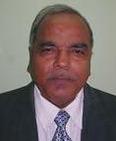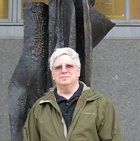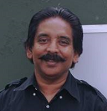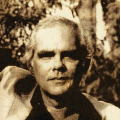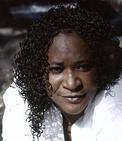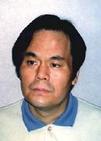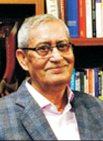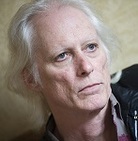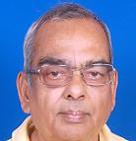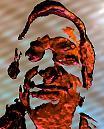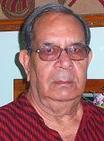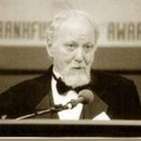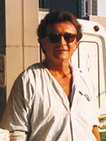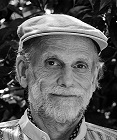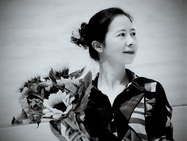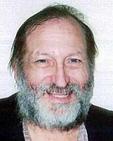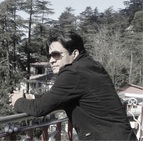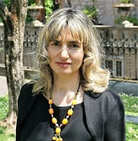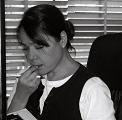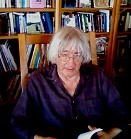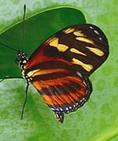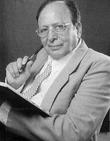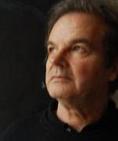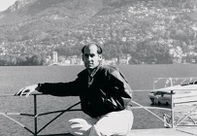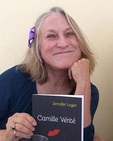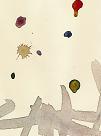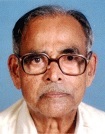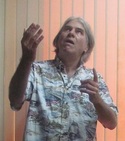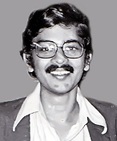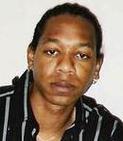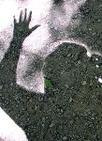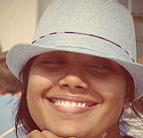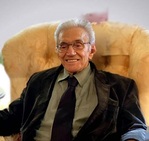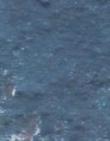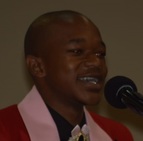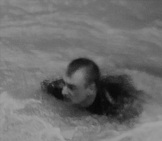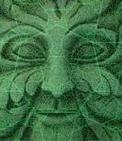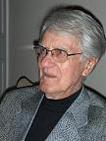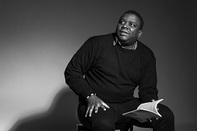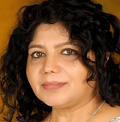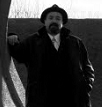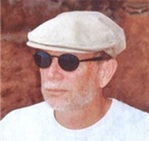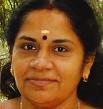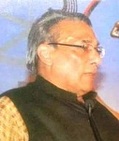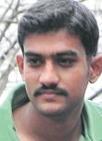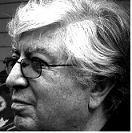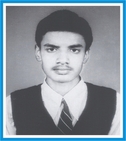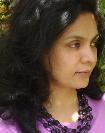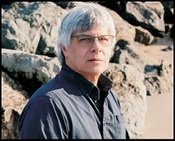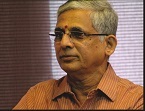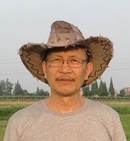The Haiku of Sayumi ...
 |
|
||||||||||||||||||||||||||||
The Haiku of Sayumi Kamakura: A Critical Study is not restricted to the critical elucidiation of her masterpiece A Crown of Roses; it also relates the use of the cutting word 'kiriji' in her numberless haiku published in her different other collections and several international literary journals. This volume rests in part on Sayumi Kamakura's manuscript sources, and on facts collected through interviews or correspondence. But most characteristically it is an attmpt at critically interpreting the vast body of Kamakura's published haiku in her several collections, and also international literary journals and magazines In this substantial, powerfully argued convincing collection of critical views, the authors across the globe demonstrate how Sayumi Kamakura succeeds in presenting 'distillation of a moment' in her haiku. It is fitting that the included essays draw extensively on illustrations from her haiku. This is a distictive presentation of her haiku transcending race, creed and ideology. I hope this critical book with deft cmmentary and up-to-date information on Sayumi Kamakura's haiku will meet the needs of all haiku lovers. The impetus behind this book was my visit to Vilnius along with Karunesh Kumar Agarwal to attend the Druskininkai 20th Poetic Fall Festival and the 5th World Haiku Association Conference, October 2009, organized by Ban'ya Natsuishi and Kornelijus Platelis. In Vilnius, it was a great pleasure to meet Sayumi Kamakura. It has been a wonderful experience meeting Ban'ya Natsuishi and Sayumi Kamakura. I felt elated. I watched around me. My heart was beating fast. I was too keyed up. Meanwhile, something magical happened. Ban'ya Natsuishi and Sayumi Kamakura appeared. I had the honor of hearing their haiku in Vilnius. Both have been recognized for years as the world's leading haiku poets. Karunesh Agrawal and I myself heard her reciting haiku in Vilnius. The welding together of thought, passion and soothing voice of Sayumi Kamakura reading her wonderful haiku in Vilnius, Lithuania-this leaves no doubt in my mind that she is one of the greatest contemporary haiku poets. I realized that an important haiku poet like Sayumi Kamakura deserved a comprehensive critical book, thus making available a scholarly study interpretating her haiku. I must say that Sayumi Kamakura deserves the critical acclaim and recognition. Cyberwit's Managing Editor Karunesh Agrawal was the first in Vilnius to talk to Sayumi Kamakura about Cyberwit's project of bringing out a critical book about her immortal contribution as a haiku poet.The decision to publish this book was made in Vilnius and Helsinki in October 2009. While returning from Vilnius, we along with Sayumi Kamakura, Ban'ya Natsuishi, Joseph S. Spence. Sr. and other Japanese poets like Akira Takenami, Bin Akio, Hideaki Ishikura, Hikari Kumoi, Hideaki Matsuoka, Takeo Nakamura and Yuko Tange had to wait for about eight hours at Helsinki airport to catch our connecting flight. This was a golden opportunity of all verbal communication between Sayumi Kamakura and Karunesh about the book. After returning back to India, he contacted Sayumi again to communicate that the title of the critical book on her would be The Haiku of Sayumi Kamakura: A Critical Study. In the first instance, Karunesh worked towards gathering critical essays with an eye to critically appreciate Sayumi's haiku, so that this title may be available to scholars and poets around the world for further research and scholarship. Each essay takes a closer look at Sayumi Kamakura's haiku world. Cyberwit is devoted to bring out books of criticism about 21st century haiku poets. The response to my critical book The Poetic Achievement of Ban'ya Natusishi (2009) was quite gratifying. This is only the beginning to increase the understanding of contemporary haiku poets. Our future projects are to publish such books in future. This will help in creating an International Haiku Movement and global community of haiku poets. It is a special joy to be able to present this book, a pioneering effort, most notably in finding Sayumi Kamakura's "inner world, before language, before custom, before culture" (Gary Snyder). I have been able, as well, to include the critical articles by authors of different languages and cultures. Sayumi is an acute observer and a vigorous thinker with a versatile imagination. It is my hope that this book will inspire similar studies and more critical interpretations of Sayumi's poems will continue into the 21st century. Jim Kacian remarks: "While discovering the revelatory in the ordinary may sound like Zen, it also sounds like any other exhortation toward heightened perception: slow down, pay attention to what's before you, write clearly and accurately. Here it seems almost inevitable that the "haiku moment" and the "moment of satori" (the attainment of enlightenment, according to Zen Scholar D T Suzuki) be conflated, and even seen by some as identical" ("The Haiku Moment"). So it is with Sayumi Kamakura: her haiku obtain an access to the "haiku moment" or "the moment of satori" spontaneously. More than any other haiku poet of our time, she has resorted to haiku the actual beatific quest for eternity and satori. Sayumi's haiku reveal a sense of being in the moment, concreteness, immediacy and capture a "moment in time" unveiling her wisdom inclusive of spirituality and mysticism with juxtaposition of rival images. I have also added critical interpretation of haiku from her earlier haiku collections published from 1984 to 1996. In my own analysis of her haiku universe, I've kept in mind to clarify the underlying meaning of the haiku in her greatest work A Crown of Roses. I have endeavoured to present in this critical essay a comprehensive account of all particulars relevant to interpret her haiku on the basis of sticking to the text. This book is international in scope as it brings together critical essays by several authors across the globe on Sayumi's wonderful haiku poetry. Selecting the authors was very challenging, and there was the usual difficulty of obtaining access to proper haiku critics. I trust this book including commentary and some of the best criticism on one of the greatest haiku poets of our time deserves a place in the public and college libraries interested in Sayumi Kamakura's haiku poetry. The libraries need look no further than this excellent and most substantial critical survey on Sayumi as a haiku poet to support student research and satisfy the common readers interested in this increasingly popular genre of world poetry. The contributors are Adam Donaldson Powell, Azsacra Zarathustra, Floriana Hall, Fran Shaw, Jean LeBlanc, Jim Kacian, Joseph S. Spence, Sr, Magdalena Dale, Marc Carver, Maria Cristina Azcona, Patricia Prime, Petar Tchouhov, Salvatore Buttaci, Santosh Kumar, Suzie Palmer and Vasile Moldovan. I would like to thank all the contributing authors. I'm highly obliged to them for their cooperation for their great help in publishing this book. The most salient features of this book are as follows: i. The critical essays contain the text of Sayumi's haiku, accompanied by commentary. ii. The contributors focus on on the most important features of her haiku. iii. Critical appreciation of Sayumi Kamakura's poetry reveals the "haiku moment" in her works. iv. A large number of illustrations from her haiku collections is provided to attract readers into interaction with her haiku text. Anyone writing haiku today will be immensely benefited by this collection of critical essays providing best criticism on Sayumi Kamakura's haiku, widely regarded as one of Japan's most loved haiku poets. This is my third book of criticism, an exceptional work including rich collection of scholarly essays by our foremost critics and poets. With deep and sincere appreciation Iagain thank them. This discerning book includes a profile of the Japanese poet Sayumi Kamakura comprising a biography, examples of her haiku from her poetical works, a critique of her work presented with various opinions and well researched critical essays across the globe, illuminating all the key issues surrounding her haiku poetry. It contains full text of critical articles about Sayumi, some scholarly articles exploring Sayumi's art of haiku and very best criticism of her most famous work A Crown of Roses. Several haiku collections of Sayumi Kamakura have been published. Her haiku have been included in many major anthologies and published in several international journals. It is a great pleasure that Cyberwit publishes this collection of critical articles about one of the leading Japanese haiku poets and editor of GINYU. Sayumi Kamakura has finally received her first critical study in book form. With this book, Sayumi Kamakura's work can now be more fully appreciated and enjoyed by contemporary haiku readers. This comprehensive critical survey of Sayumi Kamakura's haiku poems is highly recommended for the libraries interested in haiku poets. This is the best book on Sayumi Kamakura yet written. Anyone writing modern haiku will be immemnsely benefited by using this book. This new interpretation of Sayumi Kamakura, widely regarded as one of the greatest haiku poets, will prove to be a classic work of literary criticism. - Santosh Kumar 序文
鎌倉佐弓は、1953年、日本の高知県に生まれた。埼玉大学の学生時代に俳句を作りはじめ、能村登四郎と林翔の両氏に師事、1988年には沖珊瑚賞を受賞。以後、抒情的な作風が注目を集める。1998年に夏石番矢と俳誌『吟遊』を創刊、現在に至るまで同誌編集長として活躍している他、日本・スロベニア・ポルトガル・ブルガリア等の各国で開催された国際的な俳句祭や詩歌祭に参加している。2001年には現代俳句協会賞を受賞。著書は、『潤』(1984年)、『水の十字架』(1987年)、『天窓から』(1992年)、『鎌倉佐弓句集』(1998年)、『走れば春』(2001年)、共著は、『現代俳句パノラマ』(1994年)、『現代俳句ハンドブック』(1995年)、『現代俳句集成』(1996年)等。日英対訳句集『A Singing Blue: 50 Selected Haiku』(2000年)も刊行している。鎌倉佐弓の俳句はこれまでに英語、ギリシャ語、ロシア語、ブルガリア語、ポルトガル語、韓国語などに訳されている。世界俳句協会幹事・会員。
|
|||||||||||||||||||||||||||||
|
|||||||||||||||||||||||||||||
Authors
Keep in touch
The Haiku of Sayumi ...
 |
|
||||||||||||||||||||||||||||
The Haiku of Sayumi Kamakura: A Critical Study is not restricted to the critical elucidiation of her masterpiece A Crown of Roses; it also relates the use of the cutting word 'kiriji' in her numberless haiku published in her different other collections and several international literary journals. This volume rests in part on Sayumi Kamakura's manuscript sources, and on facts collected through interviews or correspondence. But most characteristically it is an attmpt at critically interpreting the vast body of Kamakura's published haiku in her several collections, and also international literary journals and magazines In this substantial, powerfully argued convincing collection of critical views, the authors across the globe demonstrate how Sayumi Kamakura succeeds in presenting 'distillation of a moment' in her haiku. It is fitting that the included essays draw extensively on illustrations from her haiku. This is a distictive presentation of her haiku transcending race, creed and ideology. I hope this critical book with deft cmmentary and up-to-date information on Sayumi Kamakura's haiku will meet the needs of all haiku lovers. The impetus behind this book was my visit to Vilnius along with Karunesh Kumar Agarwal to attend the Druskininkai 20th Poetic Fall Festival and the 5th World Haiku Association Conference, October 2009, organized by Ban'ya Natsuishi and Kornelijus Platelis. In Vilnius, it was a great pleasure to meet Sayumi Kamakura. It has been a wonderful experience meeting Ban'ya Natsuishi and Sayumi Kamakura. I felt elated. I watched around me. My heart was beating fast. I was too keyed up. Meanwhile, something magical happened. Ban'ya Natsuishi and Sayumi Kamakura appeared. I had the honor of hearing their haiku in Vilnius. Both have been recognized for years as the world's leading haiku poets. Karunesh Agrawal and I myself heard her reciting haiku in Vilnius. The welding together of thought, passion and soothing voice of Sayumi Kamakura reading her wonderful haiku in Vilnius, Lithuania-this leaves no doubt in my mind that she is one of the greatest contemporary haiku poets. I realized that an important haiku poet like Sayumi Kamakura deserved a comprehensive critical book, thus making available a scholarly study interpretating her haiku. I must say that Sayumi Kamakura deserves the critical acclaim and recognition. Cyberwit's Managing Editor Karunesh Agrawal was the first in Vilnius to talk to Sayumi Kamakura about Cyberwit's project of bringing out a critical book about her immortal contribution as a haiku poet.The decision to publish this book was made in Vilnius and Helsinki in October 2009. While returning from Vilnius, we along with Sayumi Kamakura, Ban'ya Natsuishi, Joseph S. Spence. Sr. and other Japanese poets like Akira Takenami, Bin Akio, Hideaki Ishikura, Hikari Kumoi, Hideaki Matsuoka, Takeo Nakamura and Yuko Tange had to wait for about eight hours at Helsinki airport to catch our connecting flight. This was a golden opportunity of all verbal communication between Sayumi Kamakura and Karunesh about the book. After returning back to India, he contacted Sayumi again to communicate that the title of the critical book on her would be The Haiku of Sayumi Kamakura: A Critical Study. In the first instance, Karunesh worked towards gathering critical essays with an eye to critically appreciate Sayumi's haiku, so that this title may be available to scholars and poets around the world for further research and scholarship. Each essay takes a closer look at Sayumi Kamakura's haiku world. Cyberwit is devoted to bring out books of criticism about 21st century haiku poets. The response to my critical book The Poetic Achievement of Ban'ya Natusishi (2009) was quite gratifying. This is only the beginning to increase the understanding of contemporary haiku poets. Our future projects are to publish such books in future. This will help in creating an International Haiku Movement and global community of haiku poets. It is a special joy to be able to present this book, a pioneering effort, most notably in finding Sayumi Kamakura's "inner world, before language, before custom, before culture" (Gary Snyder). I have been able, as well, to include the critical articles by authors of different languages and cultures. Sayumi is an acute observer and a vigorous thinker with a versatile imagination. It is my hope that this book will inspire similar studies and more critical interpretations of Sayumi's poems will continue into the 21st century. Jim Kacian remarks: "While discovering the revelatory in the ordinary may sound like Zen, it also sounds like any other exhortation toward heightened perception: slow down, pay attention to what's before you, write clearly and accurately. Here it seems almost inevitable that the "haiku moment" and the "moment of satori" (the attainment of enlightenment, according to Zen Scholar D T Suzuki) be conflated, and even seen by some as identical" ("The Haiku Moment"). So it is with Sayumi Kamakura: her haiku obtain an access to the "haiku moment" or "the moment of satori" spontaneously. More than any other haiku poet of our time, she has resorted to haiku the actual beatific quest for eternity and satori. Sayumi's haiku reveal a sense of being in the moment, concreteness, immediacy and capture a "moment in time" unveiling her wisdom inclusive of spirituality and mysticism with juxtaposition of rival images. I have also added critical interpretation of haiku from her earlier haiku collections published from 1984 to 1996. In my own analysis of her haiku universe, I've kept in mind to clarify the underlying meaning of the haiku in her greatest work A Crown of Roses. I have endeavoured to present in this critical essay a comprehensive account of all particulars relevant to interpret her haiku on the basis of sticking to the text. This book is international in scope as it brings together critical essays by several authors across the globe on Sayumi's wonderful haiku poetry. Selecting the authors was very challenging, and there was the usual difficulty of obtaining access to proper haiku critics. I trust this book including commentary and some of the best criticism on one of the greatest haiku poets of our time deserves a place in the public and college libraries interested in Sayumi Kamakura's haiku poetry. The libraries need look no further than this excellent and most substantial critical survey on Sayumi as a haiku poet to support student research and satisfy the common readers interested in this increasingly popular genre of world poetry. The contributors are Adam Donaldson Powell, Azsacra Zarathustra, Floriana Hall, Fran Shaw, Jean LeBlanc, Jim Kacian, Joseph S. Spence, Sr, Magdalena Dale, Marc Carver, Maria Cristina Azcona, Patricia Prime, Petar Tchouhov, Salvatore Buttaci, Santosh Kumar, Suzie Palmer and Vasile Moldovan. I would like to thank all the contributing authors. I'm highly obliged to them for their cooperation for their great help in publishing this book. The most salient features of this book are as follows: i. The critical essays contain the text of Sayumi's haiku, accompanied by commentary. ii. The contributors focus on on the most important features of her haiku. iii. Critical appreciation of Sayumi Kamakura's poetry reveals the "haiku moment" in her works. iv. A large number of illustrations from her haiku collections is provided to attract readers into interaction with her haiku text. Anyone writing haiku today will be immensely benefited by this collection of critical essays providing best criticism on Sayumi Kamakura's haiku, widely regarded as one of Japan's most loved haiku poets. This is my third book of criticism, an exceptional work including rich collection of scholarly essays by our foremost critics and poets. With deep and sincere appreciation Iagain thank them. This discerning book includes a profile of the Japanese poet Sayumi Kamakura comprising a biography, examples of her haiku from her poetical works, a critique of her work presented with various opinions and well researched critical essays across the globe, illuminating all the key issues surrounding her haiku poetry. It contains full text of critical articles about Sayumi, some scholarly articles exploring Sayumi's art of haiku and very best criticism of her most famous work A Crown of Roses. Several haiku collections of Sayumi Kamakura have been published. Her haiku have been included in many major anthologies and published in several international journals. It is a great pleasure that Cyberwit publishes this collection of critical articles about one of the leading Japanese haiku poets and editor of GINYU. Sayumi Kamakura has finally received her first critical study in book form. With this book, Sayumi Kamakura's work can now be more fully appreciated and enjoyed by contemporary haiku readers. This comprehensive critical survey of Sayumi Kamakura's haiku poems is highly recommended for the libraries interested in haiku poets. This is the best book on Sayumi Kamakura yet written. Anyone writing modern haiku will be immemnsely benefited by using this book. This new interpretation of Sayumi Kamakura, widely regarded as one of the greatest haiku poets, will prove to be a classic work of literary criticism. - Santosh Kumar 序文
鎌倉佐弓は、1953年、日本の高知県に生まれた。埼玉大学の学生時代に俳句を作りはじめ、能村登四郎と林翔の両氏に師事、1988年には沖珊瑚賞を受賞。以後、抒情的な作風が注目を集める。1998年に夏石番矢と俳誌『吟遊』を創刊、現在に至るまで同誌編集長として活躍している他、日本・スロベニア・ポルトガル・ブルガリア等の各国で開催された国際的な俳句祭や詩歌祭に参加している。2001年には現代俳句協会賞を受賞。著書は、『潤』(1984年)、『水の十字架』(1987年)、『天窓から』(1992年)、『鎌倉佐弓句集』(1998年)、『走れば春』(2001年)、共著は、『現代俳句パノラマ』(1994年)、『現代俳句ハンドブック』(1995年)、『現代俳句集成』(1996年)等。日英対訳句集『A Singing Blue: 50 Selected Haiku』(2000年)も刊行している。鎌倉佐弓の俳句はこれまでに英語、ギリシャ語、ロシア語、ブルガリア語、ポルトガル語、韓国語などに訳されている。世界俳句協会幹事・会員。
|
|||||||||||||||||||||||||||||
|
|||||||||||||||||||||||||||||

 Items in cart - View Cart
Items in cart - View Cart 